First impression of the Xiaomi Mi5s
Update (July 2017)
The Xiaomi Mi5s has now been on the market for almost 10 months. A lot has happened around the smartphone since then, which is why we are bringing this review up to date. Personally, I still use the smartphone as a second device, which is why the review was expanded to include my current experiences. To what extent the smartphone has been improved in terms of software, errors have been corrected or whether new errors have appeared, you can find out in the green boxes under the respective categories!
[/ alert]What's in the box
The scope of delivery of the Xiaomi Mi5s is clear. In addition to a quick charger (5V 2.5A) and a USB Type-C cable, a Chinese instruction manual including a SIM needle is included. Xiaomi smartphones are usually intended for the Chinese market, which is why the charger has a type A plug and not a type C plug that is common in this country. Most online retailers include an adapter.
Design and workmanship
The smartphone is available in 4 different colors. Our test copy has the color "silver". But there are also the colors "Rose Gold", "Gold" and "Deep Gray". Only the "Deep Gray" model has a black front. The front of the 3 other color variants is white.
The housing is made of metal and impresses with its visually appealing unibody design. The back is not removable, which is why the battery cannot be replaced. The case is slightly rounded on the sides, which makes the smartphone very easy to hold. The side control buttons are also made of metal, are easy to reach and neatly embedded in the frame. The pressure point of the keys is convincing and no annoying rustling is noticeable during fast movements. Overall, there is nothing to complain about in terms of the workmanship of the Xiaomi Mi5.
The design is a matter of taste. With the metal case, the Xiaomi Mi5s comes closer to the models of the Redmi series. The big advantage of the metal housing is that it is not too slippery in the hand compared to the glass or ceramic back of the Xiaomi Mi5. The placement of the fingerprint scanner, which is not on the back, but has been integrated into the capacitive home button, is very nice. Two additional and illuminated, capacitive navigation buttons are located to the left and right of the home button. Thanks to the 2.5D curved glass of the display, the smartphone looks very sleek. The bezel remains rather average. Above the display there is a notification LED that is freely configurable.
Used almost every day for 8 months without a protective cover or screen protector. There are no scratches whatsoever on the display and the metal housing is also extremely resistant. Only the sanded border of the frame is susceptible to scratches. In the long-term test, this showed slight scratches and nicks, which, however, are hardly noticeable and do not affect the overall picture. Xiaomi has done a really good job here and made a really durable smartphone with the Xiaomi Mi5s!
Display and touch screen
The display has a full HD resolution (1920 x 1080 pixels). With a display diagonal of 5.15 inches, this results in a whopping 428 DPI, which means that individual pixels can no longer be seen with the naked eye. The color representation of the IPS display is convincing. Colors are displayed vividly and powerfully. If the display seems too cool for you, you can adjust the color temperature as you wish in the MIUI 8 display settings.
The smartphone collects plus points with the maximum screen brightness. With a luminance of 600 nits, this display is one of the brightest! If you use the smartphone in the dark, you can be dazzled if the automatic brightness adjustment is deactivated. The display remains easy to read in the sunshine. In direct sunlight, legibility is also slightly impaired with this display. The viewing angle stability was also convincing. No matter how you turn or tilt the smartphone, the display remains unchanged.
Information on the display glass makes Xiaomi not. Probably no Corning Gorilla Glass, but a conventional display glass was used. After several weeks of active use, I have not noticed any scratches on the display yet. Nevertheless, you should as a precaution apply a screen protector!
The touchscreen impressed in the test with its precise recognition of individual inputs. With the Xiaomi Mi5s, Xiaomi introduced the “3D Touch” or “Force Touch” known from Apple iOS devices for the first time. This is a pressure-sensitive control element, which means that compatible apps are provided with shortcuts. This function currently only offers the model with 4GB of RAM! To what extent the 3GB model will also receive this function is currently unknown! In terms of hardware, it would also be possible to support the 3GB model with 3D Touch, as the same Synaptics Touch firmware is used. The only difference between the models is the amount of RAM and internal storage.
Update: In the meantime, Force Touch can also be activated on the 3GB model!
Performance of the Xiaomi Mi5
With the Qualcomm Snapdragon 821, the handheld is equipped with the currently most powerful Snapdragon SoC. This relies on a total of 4 Kyro cores that clock at up to 2.4 GHz. However, the clock speed of the Snapdragon 821 of this smartphone has been reduced to 2x2.0 GHz and 2x2.15 GHz. Only the larger handheld "Xiaomi Mi5s Plus" offers clock rates of a maximum of 2.35 GHz. Compared to the Snapdragon 820, the performance has been increased by about 10%.
- PCMark benchmark
- 3DMark benchmark
The Xiaomi Mi5s we tested offers 3GB of RAM (LPDDR4) and 64GB of internal storage (UFS2.0). The smartphone is also available with 4GB of RAM and 128GB of internal storage. A memory expansion option is missing!
The everyday performance could hardly be better. Applications open at the push of a button and the handheld shows no weaknesses even in multitasking. The system takes up a good 3GB of a total of 1.8GB RAM, so that around 1.2GB of other apps are still available. The Mi5s also cuts a good figure with current Android games. The Adreno 530 processor graphics can definitely compete with graphically demanding games and is also suitable for a wide variety of emulators.
- AnTuTu Benchmark
- Geekbench3 benchmark
The performance of the smartphone has not noticeably improved or deteriorated after a version change to Android 7.0 (Xiaomi EU ROM). MIUI continues to run smoothly in everyday life and there have been no performance drops or even crashes. Especially in relation to the performance of the Xiaomi Mi5s even months after its release on a top level and can also with currently released high-end smartphone, such as Xiaomi Mi6 definitely keep up.
user interface
MIUI 8
If you buy a Xiaomi smartphone from a Chinese online retailer, 90% of the time you get a device with MIUI "Shop-ROM". With a “Shop-ROM” mostly only the language selection is extended, but often “bloatware” is also preinstalled, which of course you don't want on your smartphone. In addition, no updates are provided! If you are familiar with flashing ROMs, you can flash the official MIUI 8 ROM or Xiaomi.eu ROM in just a few steps. It is best to tell the dealer to leave the original ROM on the smartphone.
A “shop ROM” was also preinstalled on our test device, which we received from Gearbest. Fortunately, the bootloader was already unlocked so we could flash any compatible ROM. MIUI 8 runs extremely sleek on the Xiaomi Mi5s. Xiaomi's update policy is commendable. So-called dev updates appear weekly, which MIUI is constantly improving. Android 7 is not yet in sight, but you can expect an update to Android 7 Nougat to appear in any case!
CyanogenMod / LineageOS
The first CyanogenMod 13 port for the Xiaomi Mi5s is now available. Unfortunately, the ROM has so far only been published in the Chinese MIUI forum, but the developer of the ROM is also active in the XDA-Developers forum. According to information, the kernel source should be published this year too, so that further custom ROMs can be expected soon!
Here is the link to the CyanogenMod thread in the XDA-Developers Forum: xda-developers.com
Update: Xiaomi has released the "Global ROM". The Global ROM is adapted to the international market, offers an extended language selection and also has the Google PlayStore installed out of the box.
Update: In the meantime, the kernel source of the Xiaomi Mi5 has also been published. Official ROM ports, especially LineageOS, can be expected soon! Custom kernels are also in the works and should appear soon.
On the software side, less has happened in the past. Xiaomi has now released a global ROM that, in contrast to the MIUI China ROM, offers an extended language selection and has the Google PlayStore pre-installed by default. Unfortunately, the global stable ROM is rarely updated. The last update (V8.0.3.0.MAGMIDI) is from December 2016 and is based on Android 6. The (almost) weekly Global DEV-ROM is also based on Android 6. An official update to Android 7 will be released in September at the latest Expected in 2017. An alternative to the official Global MIUI ROM is the Xiaomi EU ROM, which is always based on the current China DEV ROM, among other things. The Xiaomi EU ROM is already based on Android 7, so you already get a good foretaste of the upcoming, official global update.
Instead, more has happened within the developer community. Although the Xiaomi Mi5s is nowhere near as popular as its predecessor without the S addition, the smartphone is well on the way to being fully and permanently supplied with ROM and kernel updates. The kernel source was only released a few months ago. A working and official LineageOS has been available since the end of May 2016.
Camera
main camera
The Xiaomi Mi5s uses the same Sony IMX 378 image sensor for the main camera that is also installed in the Google Pixel Phone. However, the same image sensor does not mean that the image and video quality are also comparable. Rather, software optimization, the lens and other subtleties also play a decisive role when it comes to recording quality. The Sony IMX 378 is a 1 / 2.3 inch image sensor that allows photos to be taken with up to 12 megapixels. The f-number is f / 2.0. Videos are recorded with a maximum resolution of 4K.
Practical test of the main camera
The main camera is clearly one of the best China smartphone cameras. In good lighting conditions, very detailed and colorful photos are created that hardly show any image noise. In poor lighting conditions, it is more difficult to take acceptable pictures. Due to the lack of an optical image stabilizer, night shots are very quickly blurred with the slightest movement. With a steady hand or external stabilization, you can also take very good-looking photos at night. The "Phase Detection Auto Focus", which focuses without delay, is to be rated positively. The shutter release time when taking pictures is also commendable.
As already mentioned, videos are recorded with a maximum 4K resolution at 30 frames per second. The recording quality is convincing here too! Due to the lack of image stabilization, the smallest movements are unfortunately taken over accordingly. At a resolution of 1080p, electronic image stabilization can be activated, which does a good job. Again, the low bit rates are disappointing. A 4K video recording has an average bit rate of 35 Mbit / s or 83 kbit / s for audio!
The setting options of the MIUI camera app are also interesting. In addition to various photo effects similar to Instagram filters, there are also more specific camera settings such as white balance, focus or exposure. In addition to the manual recording mode, there is also a time-lapse and slow-motion mode in video mode. Due to the Camera2 API compatibility, the setting options are almost limitless.
Front camera
The front camera uses an unknown 4 megapixel image sensor and an f / 2.0 aperture. The camera records videos with up to 1080p. Thanks to the particularly large field of view of 80 ° and the “beauty mode”, the front camera is perfectly suitable for attractive selfies. In poor lighting conditions, the refresh rate becomes increasingly unstable and a slight image noise becomes noticeable!
- Front camera (good lighting conditions)
- Front camera (poor lighting conditions)
By using the Sony IMX 378 image sensor, which is also used in the Google Pixel, there was great hope that the Google Pixel camera app and camera optimizations would also be transferred to the Xiaomi Mi5s. So far, no developer has taken on this hurdle. There were minor improvements regarding camera stability. The “camera freezes” that often occurred at the beginning now only occur in rare cases. An optimization of the recording quality cannot be determined so far.
Fingerprint scanner
There is also an innovation in the fingerprint scanner. This no longer works capacitively, but through with the help of ultrasound. Xiaomi expects this to have advantages in terms of the recognition rate. In practice, the new ultrasonic fingerprint scanner has so far been less convincing. The recognition rate hardly differs from a conventional fingerprint scanner. The same applies to the unlock time, which could feel faster!
Not only we noticed the rather average fingerprint scanner. Even in the official forums, there are isolated reports on the less convincing recognition rate. However, according to Xiaomi, this is a software problem. Upcoming updates should help!
Unfortunately, the fingerprint scanner still works well below expectations. The slow unlocking time is probably due to the hardware and cannot be remedied by the software. At least Xiaomi has not yet addressed the problem!
connectivity
All common 2G and 3G network standards are fully supported. The LTE bands 3 and 7 used in this country are also available. As is common with Xiaomi, you also have to do without LTE Band 5 with the Mi20s. But it doesn't matter, because HSDPA is also extremely fast on the way. Regarding the voice quality, there is nothing to complain about in either direction. The spoken word appears crisp and free from noise. The SIM slot is located on the left side of the housing and is able to accommodate two nano SIM cards.
The smartphone performs excellently in both 2.4G and 5G WLAN. The transmission range is above average and the signal is extremely stable. The same applies to transmission via Bluetooth. With Bluetooth 4.2, the latest Bluetooth standard is currently supported.
Headphones and speakers
Music is played back interference-free via the 3.5mm headphone connection. The speaker is rather mediocre. Music played over it sounds comparatively flat. The loudspeaker is quite suitable as a hands-free device.
GPS and sensors
The GPS fix finds the smartphone within a few seconds. Even within buildings, after a good 20 seconds, a GPS fix succeeded. A precise navigation is nothing in the way with this smartphone! In addition to GPS, AGPS, GLONASS and Beidou are also supported.
The sensors amount to a brightness sensor, a proximity sensor, a gyroscope, an acceleration sensor, a Hall sensor, a barometer and an e-compass. None of the sensors had a negative impact in everyday life. NFC support including the option of card emulation is available. "Mi Pay" is available as standard for contactless payment. Android Pay is also supported, but is not yet available in this country!
Battery
The capacity of the battery is 3.200mAh. The battery cannot be changed! With normal everyday use, you can get through the day well. However, the battery must be charged after 1 ½ days at the latest. The loading times are greatly reduced by Quick Charge 3.0. A full charge once with the included charger takes 1 hour and 40 minutes.
The smartphone still achieves the expected battery life despite being used almost every day. The update to Android 7.0 has even improved the battery life slightly. Standby consumption in particular has been significantly reduced. Even after about 100 charging cycles, the battery has not deteriorated noticeably.
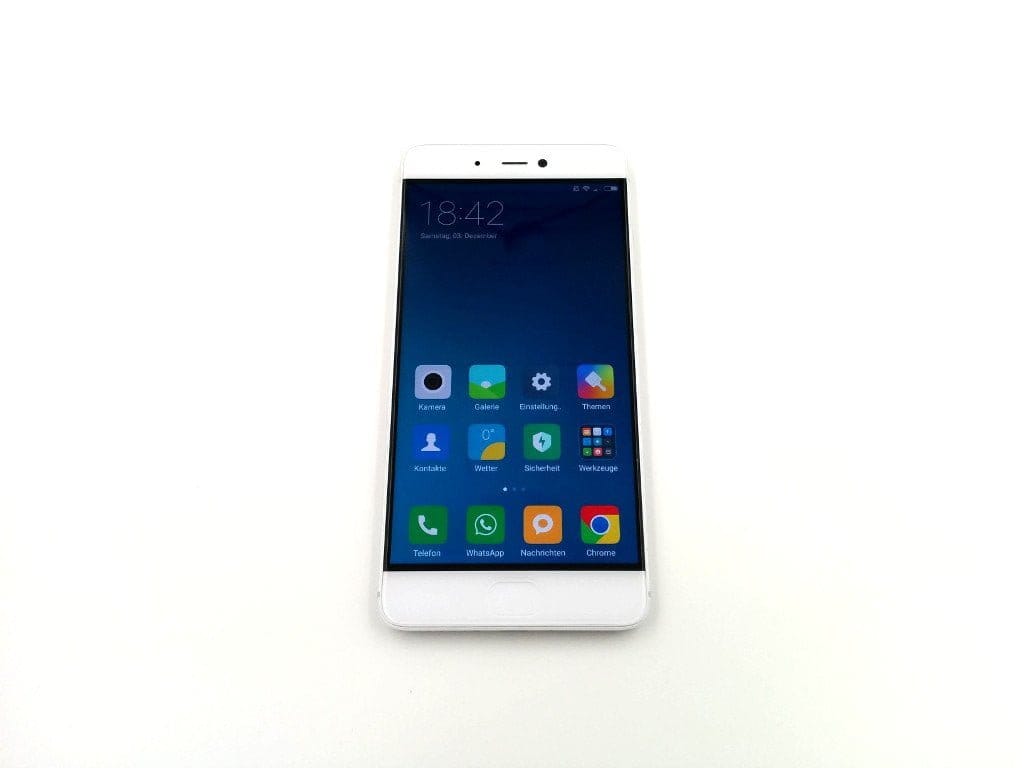
Xiaomi Mi5s
Very good workmanship
Attractive design
High-performance hardware
High resolution and bright display
Camera with potential
Quick Charge 3.0
Strong GPS
Numerous sensors
Ultrasound fingerprint scanner in need of improvement
No LTE band 20
Camera not yet optimized in software
Weak and flat sounding speaker
Force Touch only with 4GB variant
With the Xiaomi Mi5s, the Chinese smartphone manufacturer once again presents a decent flagship smartphone. Considering that Google's Pixel Phone is similarly equipped and costs more than twice the Xiaomi Mi5s, you get a smartphone for the hammer price.
Nevertheless, there is also a lot of room for improvement with this device. Although the camera convinces, it still needs to be optimized on the software side. The same applies to the ultrasound fingerprint scanner.

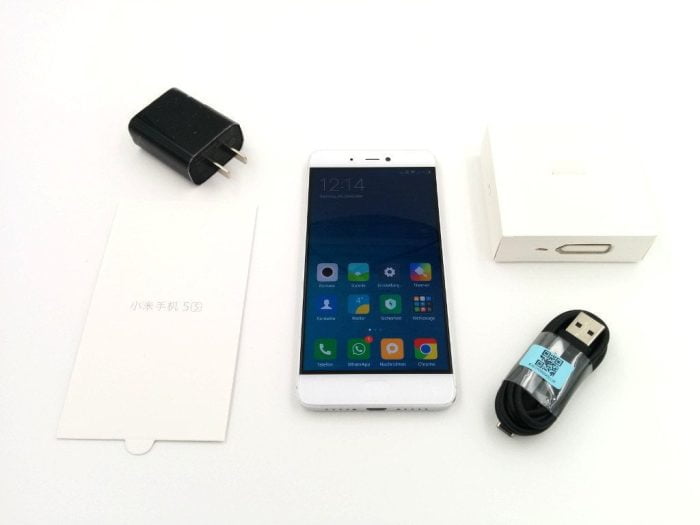
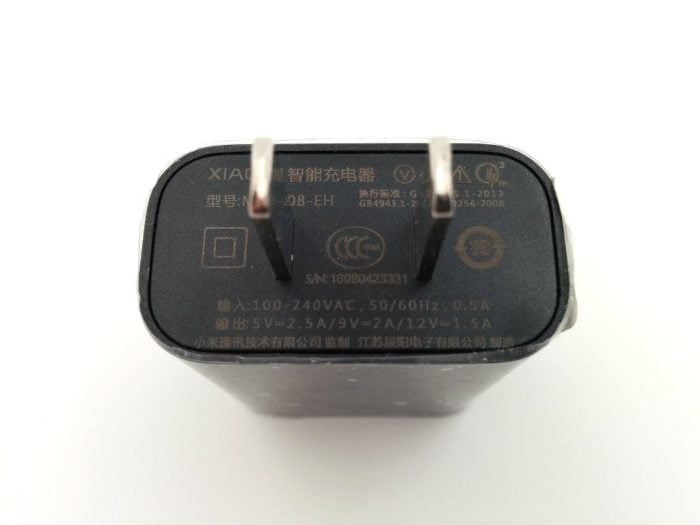
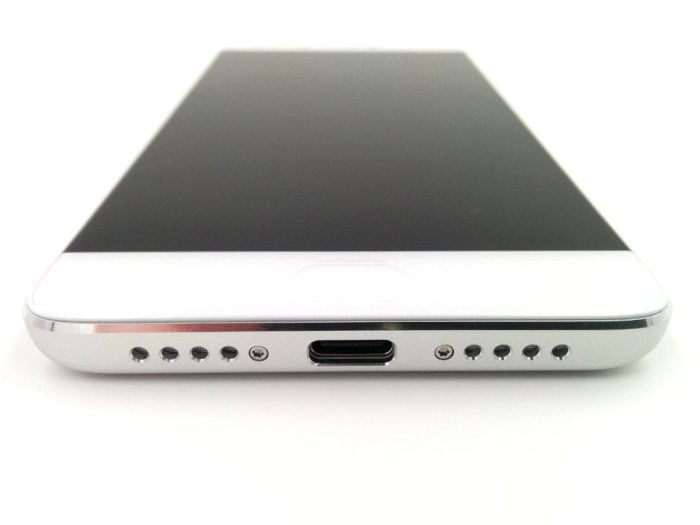
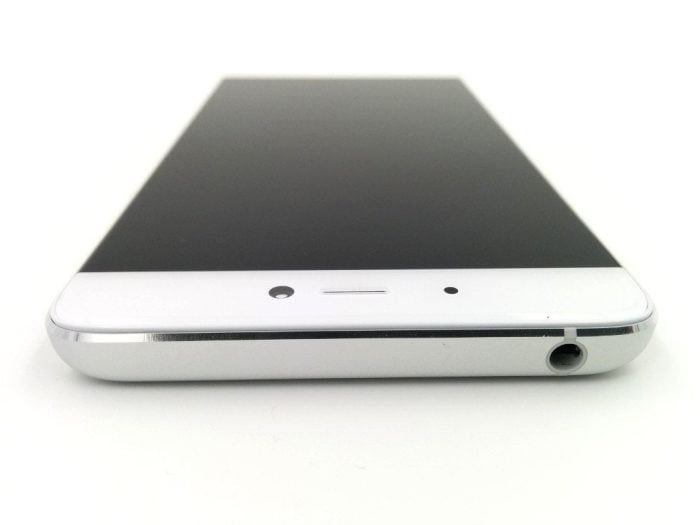
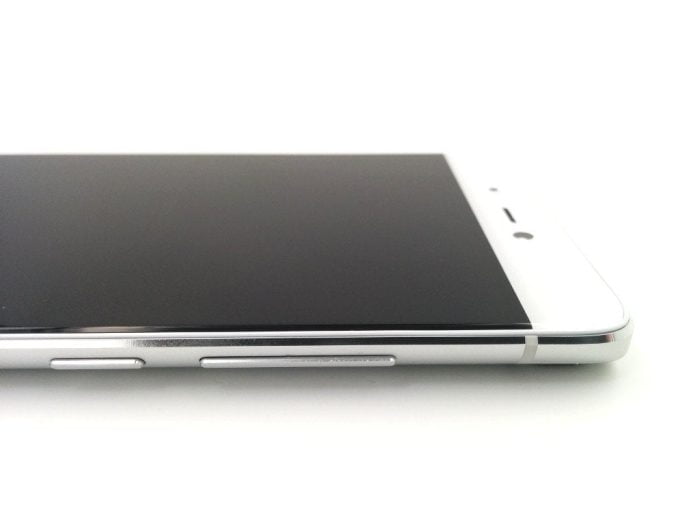
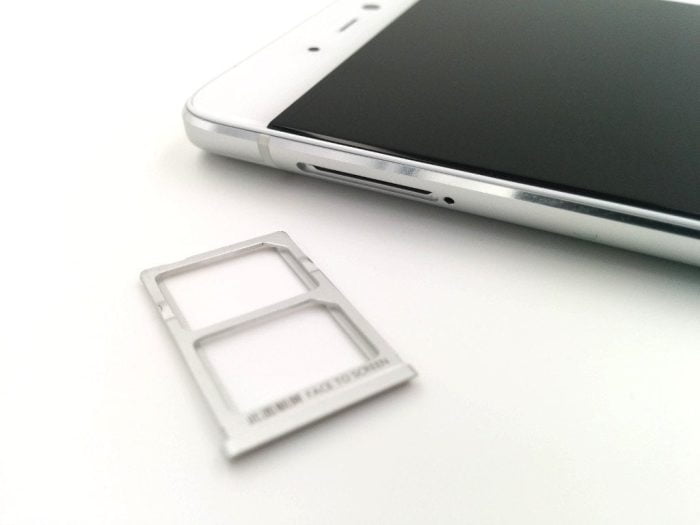






















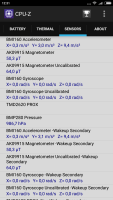




Luke
4. December 2016 22 to: 05
Great review, I like it :). I don't think the pictures are that bad at night. Did you shoot them with lightning? And how do you get along without LTE Band 20?
Timo admin
6. December 2016 12 to: 56
Thanks very much! I took the pictures without flash and with the Xiaomi camera app. In manual mode you can take acceptable pictures with it.
Not using LTE Band 20 is not a big deal for me. I have HSDPA almost everywhere, which is easily enough. When it comes to reception, I couldn't find any disadvantages.
Fabian B.
6. December 2016 12 to: 35
Hi, how can I flash another ROM? I know about it 0. Do you have a tip?
Timo admin
6. December 2016 13 to: 09
Hi Fabian, here is a rough outline of what you should pay attention to:
The bootloader should be unlocked. If you bought the smartphone through Gearbest, it may well be that the bootloader is already unlocked. But you can also request access to the bootloader. You need a Mi account for this. You can find all the information at this URL: http://en.miui.com/unlock/
If the bootloader is unlocked, you can flash any compatible ROM with the Mi Flash Tool. You can find detailed instructions, for example, in the MIUI Germany forum or on Google.
If you've never flashed a smartphone before, it can seem complicated at first. But it is worth flashing an official ROM!
Nuk
6. December 2016 21 to: 09
I ordered the Mi5S from Gearbest and selected Priority Line when shipping. How long does it normally take for the smartphone to arrive?
Timo admin
8. December 2016 00 to: 17
Hi Nuk, it usually takes 10 to 14 days. Gearbest should have sent you a tracking number as well. You can use it to track your parcel on sky56, for example!
MB
16. December 2016 11 to: 55
Hey, the Xiaomi Mi5S has installed the Snapdragon 821. Do you know whether this will also support the new European satellite system "Galileo"? I couldn't find anything about it on the web!
Timo admin
9. January 2017 18 to: 52
Hello MB, in theory the processor would support the Galileo satellite system. The manufacturer, in this case Xiaomi, would have to submit an update later.
Shennigan
12. January 2017 15 to: 29
Thanks for the detailed test! I ordered it from the UK and wrote that the original software should remain installed. Hopefully this will also be implemented.
Do you think that it will soon be possible to unlock the volume 20? Other smartphones with the same processor also support band 20 and more ?! Vlt. you are also following the topic of LTE Unlock on XDA. What do you think about?
Timo admin
12. January 2017 16 to: 22
May I help you :). With a little luck you might get. really a Mi5S with original ROM.
Because of the LTE band 20: Yes, I know the thread and the processor would actually be able to support LTE band 20 as well. Xiaomi should also publish the kernel source for the Mi2017S in the first half of 5, so that you also get more freedom in this direction. Subsequent activation of LTE Band 20 should definitely work. The NVRAM values can already be changed, but the necessary configuration for band 20 is missing within the modem. A good approach would be to compare the non-HLOS.bin of a Note 2 Global (has LTE band 20) with that of other Xiaomi Snapdragon 821 devices .
CXO
25. January 2017 10 to: 26
Hello, has the ultrasonic fingerprint sensor improved in the meantime?
Timo admin
25. January 2017 10 to: 54
Hi, with the Xiaomi.eu ROM there has not yet been any noticeable improvement. If you read in the relevant forums, there is still no improvement in the fingerprint scanner even with the official ROMs.